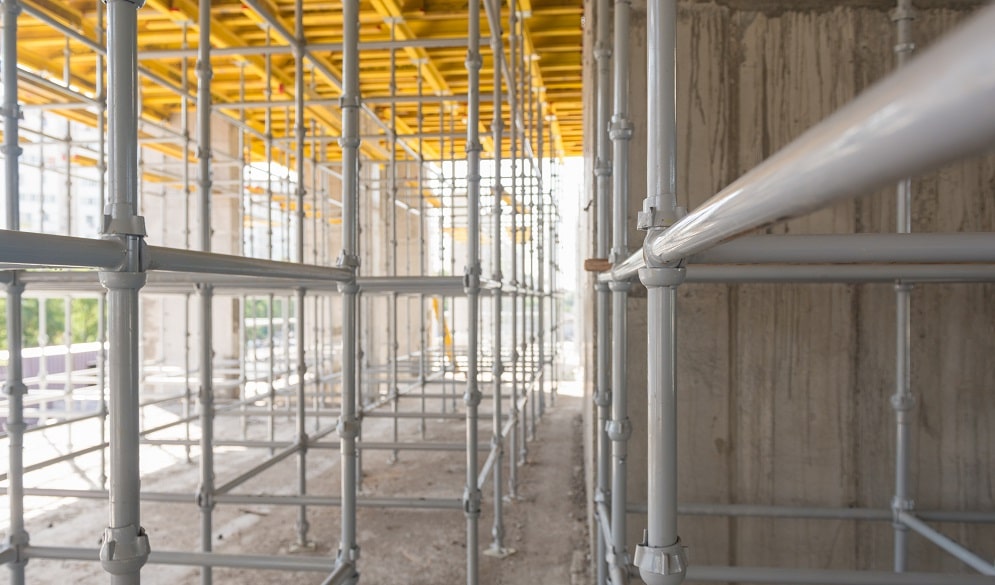You are in one of the most dangerous, harmful and accident-prone sectors if you work construction. In fact, you are at a higher risk of workplace injury working on construction sites than people working in other industries. According to statistics recently released by the HSE, most workplace fatalities occur in the construction industry, with an average death rate of 30 annually.
This is proof of the dangers faced by construction workers on worksites. Admittedly, not all these incidents are fatal, however, it is still important that you take steps to protect yourself when you work in this industry. Our 12 best tips on how you can prevent accidents and injuries as a construction worker are compiled below.
1. Keep away from operating machinery
It’s very normal for construction workers to cluster around a single area in between shifts. But this can be a cause for concern when you’re close to working machinery. Although accidents and injuries are rare in these situations, it is best to prevent any possible accidents. This is why we recommend that you stay away from operating machinery.
2. Inspect equipment and tools regularly
Your tools and equipment are vital to completing your tasks as a construction worker. Working with faulty or damaged tools is simply an accident waiting to happen. So make sure you regularly check the tools and equipment you use to verify that they are in good shape. Identifying problems and making sure they are resolved is your responsibility as a competent worker.
3. Always have PPE on
Make sure you always wear the correct Personal Protective Equipment (PPE) on the worksite. This is one of the most cost-effective and simplest ways to remain safe and prevent workplace accidents. PPE is the last line of defence in case of an accident. Your basic PPE gear must consist of eye protection, high-visibility clothing, safety footwear, safety helmets, and gloves. For extra safety, look into chemical suits, soundproof earmuffs, respiratory masks and so on. To familiarise yourself with the required work equipment for your job, take a look at the 1992 PPP at Work Regulations.
4. Do not use damaged equipment
It is never a good idea to use a damaged piece of equipment, as this will most likely do more harm than good. Construction workers tend to use available equipment regardless of its condition, which is dangerous. However, damaged parts such as worn out cords, cables or harnesses are just potential accidents waiting to cause injury.
5. Always lift objects properly
The worst nightmare for a construction worker are back strains and aches. They don’t only prevent you from doing your job but are also uncomfortable and very painful. To prevent this, it is important to avoid twisting from side to side while lifting objects and also remember to bend your knees. Also, holding one leg placed in front of the other is essential, so your body is balanced and you have more ground room to stand up from.
6. Report near misses and defects
Never dismiss issues or defects you come across on the worksite. We recommend that you report it to your boss immediately, so they can take the appropriate action promptly. The quicker problems are solved on a construction site, the smaller the accident risk is.
7. Keep work areas neat
It is not an easy thing to keep construction sites completely neat, but doing so will significantly reduce the chances of accidents happening. Keeping harmful materials lying around is asking for trouble. These could include loose nails or dangerous chemicals. Even walkways should be kept clear as cluttered walkways can cause slip and falls that can lead to serious injuries.
8. Complete health and safety training
You must undergo the necessary health and safety training as a construction worker. You should also be aware of the risks associated with your job and how to minimise these risks. Also, you need proper first aid training. You should look into the NEBOSH construction certificate on health and safety as it will provide you with vital skills. This course is among the best ways to prepare yourself for the dangers of working on construction sites.
9. Keep your first aid kit updated
It is not enough to have first aid training. Your first aid kit must be updated regularly so that you have all you need during an emergency, Accidents are unavoidable in the construction industry. Stay prepared with an updated first aid kit. Some of the things your first aid kit should contain include: disinfectants, painkillers, bandages, gauze, rubbing alcohol, sterilised gloves, and so on.
10. Be careful when climbing off and on equipment.
Climbing up or coming down from machinery are two common causes of slip and falls and other accidents on construction sites. Before making the climb, we recommend you get mud cleaned off your boots and wear gloves so your grip is decent. You should also remember to use a three-point stance so that you don’t lose your footing. Also, try not to overextend yourself or carry heavy items when climbing on or off machinery. One thing you should avoid the most is jumping off equipment.
11. Make use of technology
In today’s fast-paced world, technology is part of our daily lives. Most adults in the UK use a mobile phone, and most of these phones are smartphones. Apart from the ability of making calls, texting, and emailing, smartphones also offer a wide range of useful applications. One of such apps is the StaySafe app, which helps construction workers to work more safely. This app comes with panic buttons, as well as alerts and warnings that every construction worker will find handy. It is a great way to monitor work on construction sites. Furthermore, the StaySafe app allows users to share risk assessment reports and manage projects.
12. When in doubt – ask
It is better to be safe than sorry. On construction sites, life may be lost as a result of a tiny mistake. Talk to your supervisors or project foreman when you are confused or uncertain about something.









